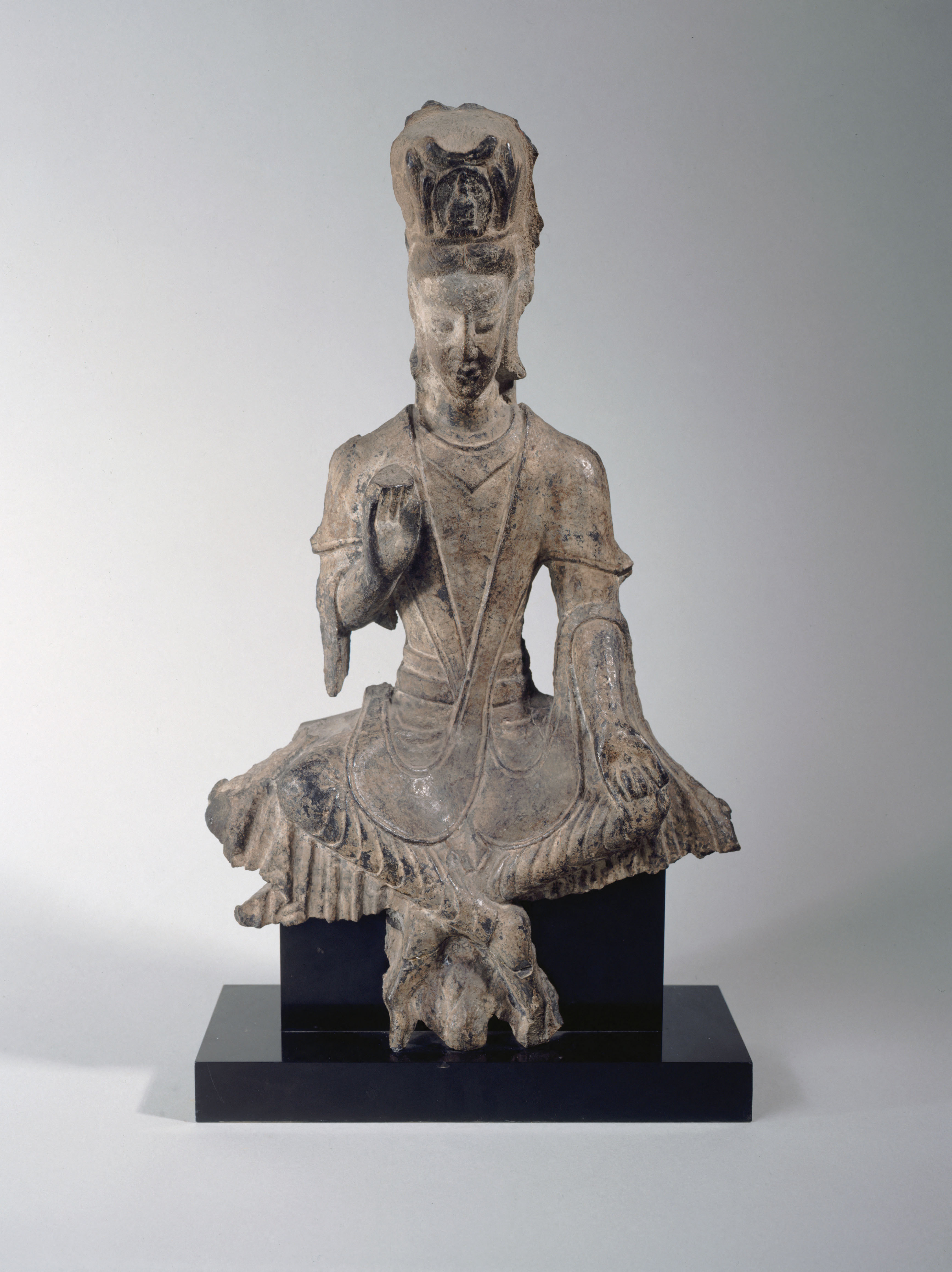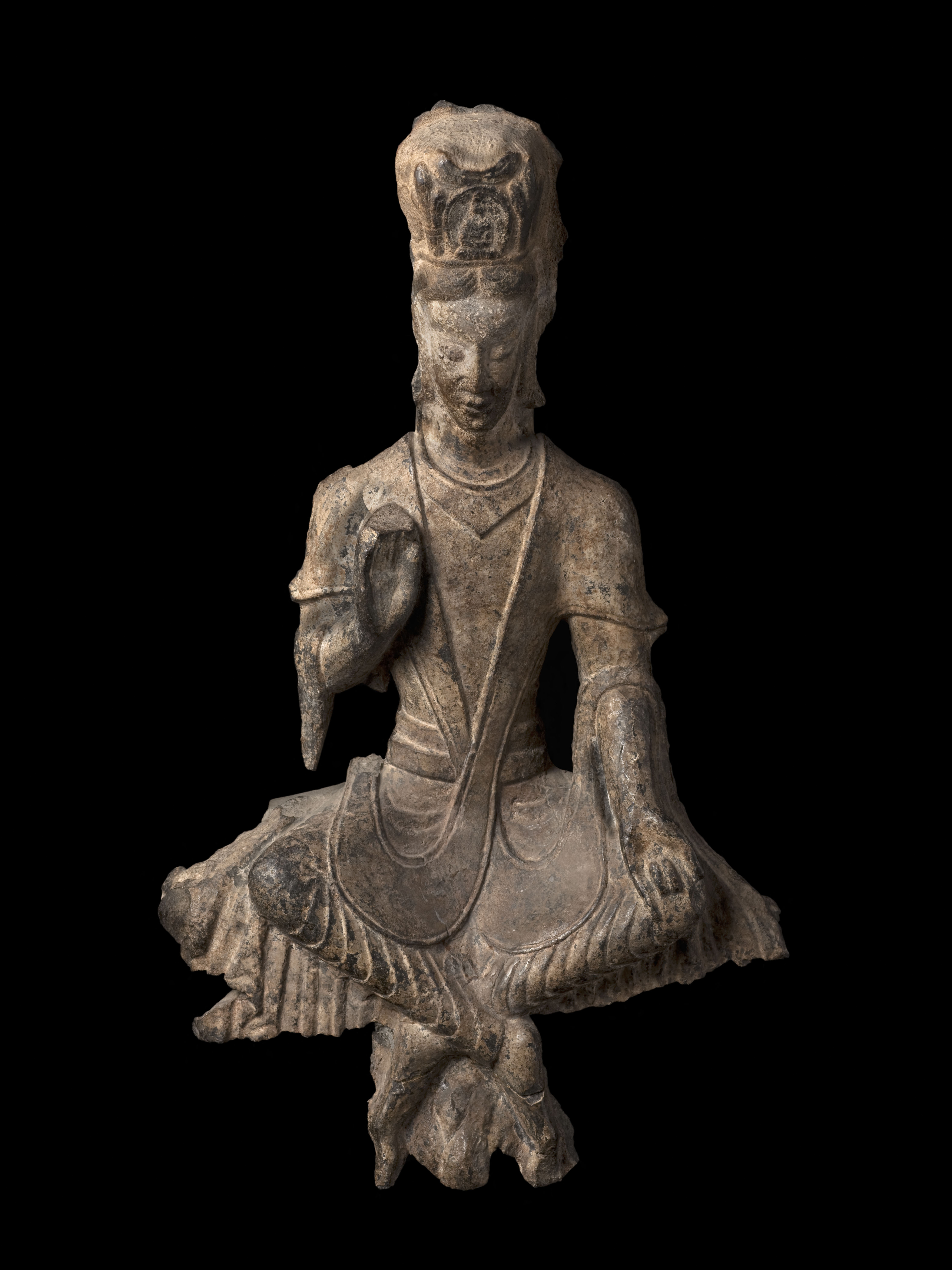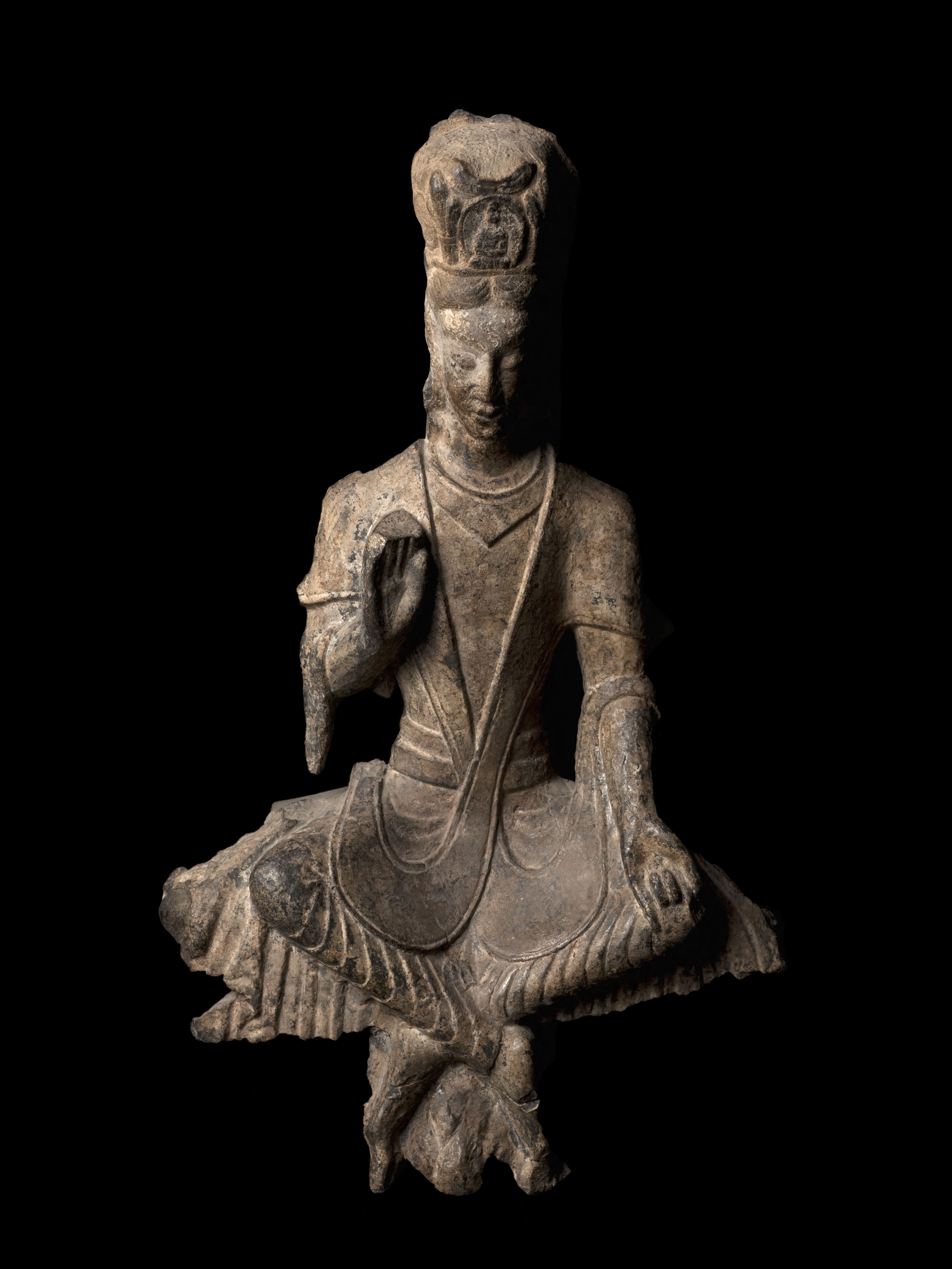
Bodhisattva Avalokiteśvara
Pierre
Statue
Don manuel : Glotz, Marguerite
M.C. 8773
The Tuoba rulers of the Northern Wei dynasty (386-534) established a first capital in 398 in Pingcheng, present-day Datong, in the north-east of Shanxi province. Although Buddhism was declared the “official religion” in their states, it endured heavy persecution from 444 to 449 on the orders of Emperor Taiwudi (424-452), protector of Taoism.
His successor, Wenchengdi (452-465), rehabilitated the Buddhist doctrine and, on the advice of the monk Tanhao, decided, in expiation, from 460, to construct the cave temples at Yungang, with an architectural style originating in India and transmitted through Central Asia. The Buddha and bodhisattvas, the life of Shakyamuni and accounts of his former lives (Jakatas) formed the basis of the iconography characteristic of Mahayana Buddhism. Among the spiritual beings “aspiring to enlightenment” (bodhisattva), Maitreya (Mile), Buddha of the future, known in China through texts such as the Maitreyavyākaraṇa Sūtra, was the object of a particular cult. After the present cosmic period, this deity would descend into the phenomenal world, transforming the southern continent (Jambudvīpa) into a pure land.
He is traditionally shown with legs pendant, sometimes like this with ankles crossed. This detail has suggested that every bodhisattva from Yungang in this posture could be identified as Maitreya, considering that the iconography was still limited in range in those ancient times. That hypothesis has been discarded today. Numerous bodhisattvas besides Maitreya are seated in this position.
The carvings of the first phase of the Yungang grottoes have marked Western influences, such as here in the row of palmettes on the base and the wet drapery following the contours of the bodily form.

